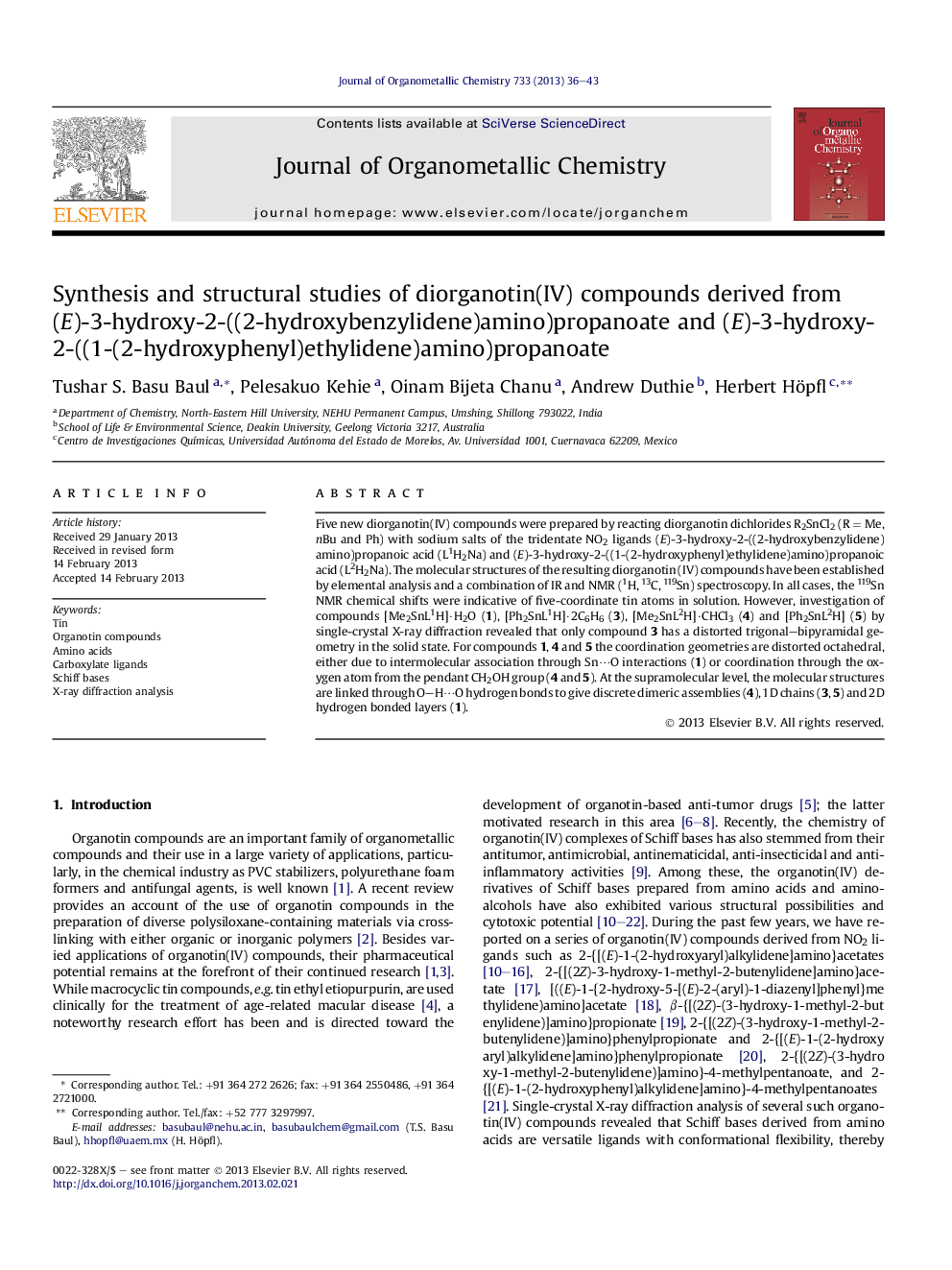| Article ID | Journal | Published Year | Pages | File Type |
|---|---|---|---|---|
| 1321845 | Journal of Organometallic Chemistry | 2013 | 8 Pages |
Five new diorganotin(IV) compounds were prepared by reacting diorganotin dichlorides R2SnCl2 (R = Me, nBu and Ph) with sodium salts of the tridentate NO2 ligands (E)-3-hydroxy-2-((2-hydroxybenzylidene)amino)propanoic acid (L1H2Na) and (E)-3-hydroxy-2-((1-(2-hydroxyphenyl)ethylidene)amino)propanoic acid (L2H2Na). The molecular structures of the resulting diorganotin (IV) compounds have been established by elemental analysis and a combination of IR and NMR (1H, 13C, 119Sn) spectroscopy. In all cases, the 119Sn NMR chemical shifts were indicative of five-coordinate tin atoms in solution. However, investigation of compounds [Me2SnL1H]·H2O (1), [Ph2SnL1H]·2C6H6 (3), [Me2SnL2H]·CHCl3 (4) and [Ph2SnL2H] (5) by single-crystal X-ray diffraction revealed that only compound 3 has a distorted trigonal–bipyramidal geometry in the solid state. For compounds 1, 4 and 5 the coordination geometries are distorted octahedral, either due to intermolecular association through Sn⋯O interactions (1) or coordination through the oxygen atom from the pendant CH2OH group (4 and 5). At the supramolecular level, the molecular structures are linked through O–H⋯O hydrogen bonds to give discrete dimeric assemblies (4), 1D chains (3, 5) and 2D hydrogen bonded layers (1).
Graphical abstractComplexes [Me2SnL1H]·H2O (1), [Bu2SnL1H] (2), [Ph2SnL1H]·2C6H6 (3), [Me2SnL2H]·CHCl3 (4), and [Ph2SnL2H] (5) (L1H = (E)-3-hydroxy-2-((2-hydroxybenzylidene)amino)propanoate and L2H = (E)-3-hydroxy-2-((1-(2-hydroxyphenyl)ethylidene)amino)propanoate) have been synthesized. A distorted octahedral geometries due to Sn⋯O interactions (1) and O-atom from the pendant CH2OH group (4 and 5) while a distorted trigonal-bipyramidal geometry in 3 is reported.Figure optionsDownload full-size imageDownload as PowerPoint slideHighlights► R2SnLH complexes (1–5) of Schiff bases. ► Distorted octahedral geometry either through Sn⋯O (1) or pendant CH2OH group (4 and 5). ► Distorted trigonal–bipyramidal geometry observed in 3. ► Dimeric assemblies (4), 1D chains (3, 5) and 2D H-bonded layers (1).
